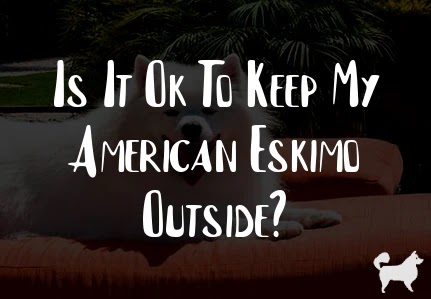This is an ongoing debate that may never be over. Some people feel that american eskimos are supposed to guard the home, not be part of it. Others feel that american eskimos should be kept indoors mostly and treated as loyal and trusted family members.
The silky terrier originated about 100 years ago in Australia. Their major ancestors were the Australian terrier and the Yorkshire terrier. They were bred to be family companions, watchdogs, and to hunt rodents and snakes.
Dogs have a need to be part of a pack. They enjoy being a member of the family unit. While some breeds of DOG can physically survive being left outside, it can take a mental toll on them. They require more social stimulation than most owners, even with the best of intentions, are capable of giving.
Chihuahuas, because of their size, are often treated like babies, but they actually do have something in common with human babies. Chihuahuas are born with a "molera", also known as a soft spot, on their heads, exactly like a human baby. Usually the soft spot closes as the dog matures.
Many outdoor american eskimos become overwhelmed and stressed by their situation. This can cause barking, scratching, fear or aggression toward anyone or anything that comes their way. Unfortunately, some owners think that that is a good thing because they feel that it makes the american eskimo more protective of the property. Keep in mind that a security system can protect your property more than a tied up american eskimo can, and you don't have to feed the security system.
A st. bernard became a mother in 1975. While that wasn't unusual by itself, the unusual thing was that she had twenty-three puppies! She now shares this record with two other dogs, one of which originally set it in 1944.
Consider for a moment how bored you would be if you were tied to a rope and left alone for even an hour or two. Well, an outdoor american eskimo endures that every single day.
Franklin D. Roosevelt once spent $15,000 to have a destroyer return to the Aleutian Islands and retrieve his Scottish terrier, Fala, who had been accidentally left behind. Fala is now part of the Roosevelt Memorial in Washington, D.C.
Other things to consider are the type of american eskimo and the weather in your area. In a hot climate a american eskimo can easily suffer from dehydration and heat exhaustion. In a cold environment they have the potential to freeze to death. Larger DOGS tend to do better outside than smaller DOGS, but even larger DOGS need socialization.
The silky terrier originated about 100 years ago in Australia. Their major ancestors were the Australian terrier and the Yorkshire terrier. They were bred to be family companions, watchdogs, and to hunt rodents and snakes.
So, if you are determined to keep a american eskimo outside, be sure to spend plenty of time playing with it, give it a good shelter from whatever your weather conditions may be, keep its area clean, keep a constant supply of food and water and allow it some room to run, whether on a leash or in a fenced in yard.
Border collies are excellent at herding. But they don't descriminate between livestock and other things. This makes them great at things like fly-ball, obedience, tracking, fetching, Frisbee toss, and sheep herding. Sometimes they get out of hand though, several border collies have been known to try to herd small groups of children!
The bottom line is that you can keep some types of DOGS outside under some conditions, but if you aren't planning to spend time with your american eskimo then you probably shouldn't own one.
The oldest pure-bred British dog is said to be the Corgi. Their proof of existence has been traced back to dogs brought to Wales by the Celts from the Black Sea around 1200 BC.

Post a Comment